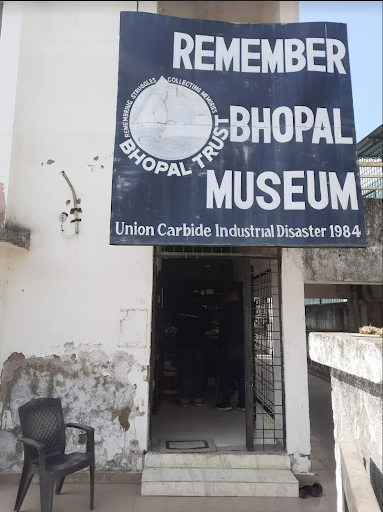For smooth Ad free experience
For smooth Ad free experience
Run and managed by those affected by the Bhopal Gas Tragedy, the 'Remember Bhopal Museum', as of December 29, 2022, has announced that it is shutting down. We take a closer look at what this museum stood for, and why is it shutting down.

Mourning a Memory: The Remember Bhopal Museum Shuts Down
If you were to walk past the HIG Housing Board Colony on Bhopal’s Berasia Road, you’d likely pass it off as a regular housing colony seen anywhere in an average Indian city. Residents sit outside their homes to bask in the winter sunlight, stray goats and cows walk the uneven roads, and TV news blares through the windows, breaking the afternoon silence. However, among the row of many usual houses is an unusual building. As soon as you walk past the front gate, the writing on the wall greets you with:
UNION CARBIDE YOU CAN’T HIDE
WE CHARGE YOU WITH GENOCIDE
A big black board reads ‘REMEMBER BHOPAL MUSEUM, Union Carbide Industrial Disaster, 1984’. Founded by the Remember Bhopal Trust, this museum is a unique effort to keep the memory of Bhopal alive, and ensures that those affected by the Union Carbide Industrial Disaster of 1984, also known as the Bhopal Gas Tragedy, retain control over their own histories and that no government body can water down the scale of the tragedy. Signs of malfunction in the safety systems were visible for a while, but it wasn't until 11 PM on December 2, 1984 that the leak started. At 12:15 AM, a tea break was announced, and by the time the break got over 25 minutes later, the leak was evident. About 40 tonnes of methyl isocyanate, a highly toxic gas, was out in the open. This ended up affecting over 500,000 people in the nearby areas and killing close to 4,000 people, as per government figures. Other reports and claims indicate up to 16,000 people might have died in this disaster. On that fateful night in 1984, the medical infrastructure crumbled as hospital beds ran short.
As you walk into the museum, you see a series of photographs across the walls and the ceiling. These are the portraits of those affected by the tragedy that took place on December 2, 1984. Taking center stage in the first room is a pink woolen sweater that belonged to a child who passed away in the tragedy.
Similarly, multiple objects belonging to those who passed away as well as those who survived the tragedy are on display across other rooms in the museum. Telephones placed across the rooms play recordings featuring the voices of the survivors, a painful reminder of the horrors of that cold December day in Bhopal. Another room showcases protest placards, and sign boards that the survivors took with them to Delhi to demand for fair compensation and a trial against Warren Anderson.
Warren Anderson, the Chairman of the Union Carbide Corporation in 1984, features in multiple posters and slogans across the museum. Branded ‘the Butcher of Bhopal’, the museum showcases protest signs and posters, as well as a narrative of how Anderson escaped India, and how the entire politico-legal system failed in bringing him back to India. ‘The world’s worst corporate criminal’, reads a board in the museum—Anderson died in 2014 without having spent a single day in jail.
The museum is a reminder of how the victims were left to fend on their own with little to no support from the civic bodies. Compensation forms and letters written to the governments are on display in the walls of the museum, showcasing the plight of the survivors and the difficulty that they had to go through to get any form of justice.
In a conversation with ThisDay, Suresh Joseph, the managing trustee of the Remember Bhopal Trust, said that the museum does not accept funding from governments or corporates, as that would allow them to pull the strings and the control of the narrative will go into their hands, which is against the very idea of this museum of public memory. The Remember Bhopal Museum, once frequented by students, researchers, and journalists, now lies in a dilapidated condition with dusty window panes and dirt-stained posters.
Run and managed by those affected by the tragedy, the museum, as of December 29, 2022, has announced that it is shutting down. Joseph attributes one of the key reasons as to why the museum is shutting down to the fact that their FCRA license has been recently canceled, which allowed them to receive foreign funding in the past. A major portion of their crowdfunding campaign saw donations coming in from foreign donors, and with that gone, the museum is all but forced to shut down.
The Bhopal Museum intends to move to a digital platform in the near future, but there are plans to reopen it for the 40th anniversary of the disaster in 2024.
0
You might be interested in reading more from
